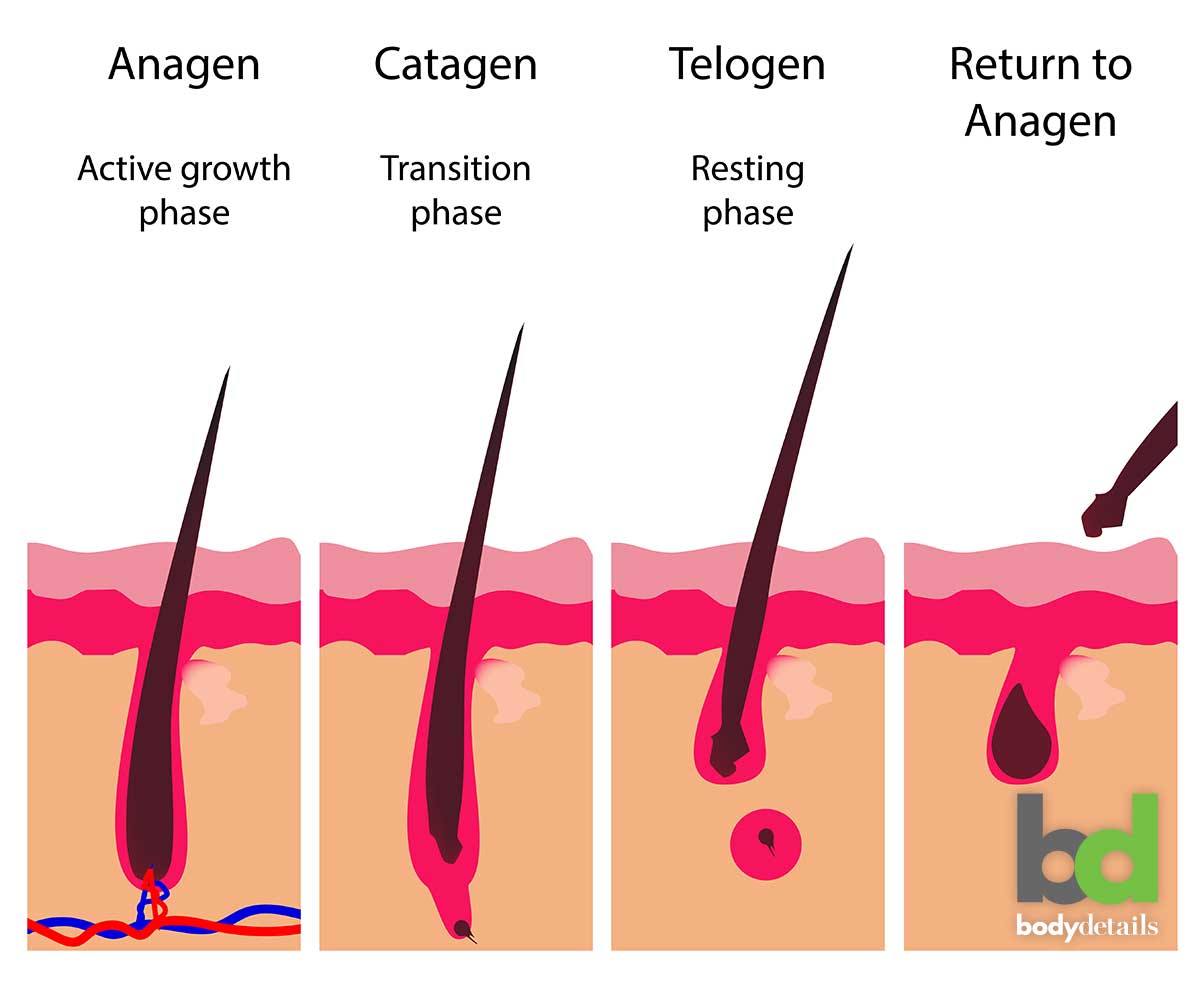If you’re thinking about getting laser hair treatment, you’ve likely stumbled upon several references to the hair growth cycle in your research. Without the basic knowledge of how our body hair grows, this hair removal method would have never been made possible.
It also explains why your hair seems to grow back so quickly right after shaving or waxing. Learn how the three states of hair growth affect laser hair removal.
How Laser Hair Removal Works
Before you can understand the hair growth cycle, you need to know how laser hair removal works first. By using the proper laser for a person’s skin color and sensitivity level, the pigment or color in the hair follicle can be targeted. The light from the laser is absorbed, ultimately damaging the follicle so that the hair doesn’t grow back. In a perfect world this could be done in one laser session, however, since each individual hair grows at a different rate, numerous treatments are required. As put by Dr. Tarugu, “- “Lasers emit a single color spectrum of light. The energy of the light is transferred to the skin and hair pigment melanin when targeted at the skin. This heats up the underlying tissue and destroys it.”
The First Stage – Anagen
The anagen phase is the first stage of the hair growth cycle, and the most visible. You can tell your body hair is in this phase when it’s above the skin and ready for removal. It’s still attached to the papilla, which is a nipple-like protrusion at the base of the hair follicle and remains in this part of the cycle for two or three weeks. When it comes to laser hair removal, the anagen phase is ideal for targeting the pigment of the hair and destroying the follicle so that it doesn’t grow back.
The Second Stage – Catagen
Occurring between growth and rest, the hair will shed in catagen phase. If you’ve ever had long hair, then you might be familiar with finding hair on your clothes or pillow. This is often due to the shedding that occurs in the catagen stage, as the hair leaves the papilla at this point. The laser isn’t always successful when targeting the body hair in this stage of the cycle, as the laser energy is unable to reach the follicle once the hair separates. Fortunately, this stage of the hair growth cycle only lasts two days, making it unlikely for the target body hair to be at this point during your laser treatments.
The Third Stage – Telogen
The telogen phase is considered the rest stage, as after the hair has shed it goes dormant. Unlike the other stages, the length of this phase is unpredictable. Sometimes the hair will begin to grow back in just a few days, but it can take up to a few years. Laser hair removal isn’t possible during this stage of the hair growth cycle.
Why Hair Growth Cycles Are Important To Laser Hair Removal
Now that you understand how the hair growth cycle works, it’s likely you can better comprehend the laser hair removal process. Any unwanted hair being targeted by the laser will need to be in the anagen phase in order to see successful results. Since each individual hair is at a different point of the cycle, it’s important to have several laser sessions to ensure all of the hair in that area has been treated. Most people need somewhere between five and ten laser sessions to completely and permanently remove all hair from an area.
The hair growth cycle also means there is a short amount of time that the hair can be affected. Laser treatments are scheduled at least eight weeks apart to allow your skin any necessary time to heal, as well as to give the hair time to go through the hair cycle. Hair that was previously in the catagen stage during your last laser treatment is given time to catch up and enter the anagen stage for your next appointment. However, waiting for more than ten weeks can mean the hair will have moved on to the catagen. It’s for this reason that missing appointments can have a negative effect on your results. Since the hair follicles are best targeted in the anagen stage, you only have a window of two or three weeks to catch it. Body Details answers more of your laser hair removal questions here!
Later down the line, you might have to go for touch ups as any hair that was in the telogen stage throughout your entire laser experience might start to grow in. This is perfectly normal, and many laser hair clinics offer packages that include a laser treatment guarantee just for this reason.
Schedule your FREE, no-obligation consultation for laser hair removal today for more information.
For more information on how laser hair removal is done, watch this short video:





